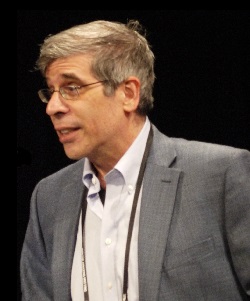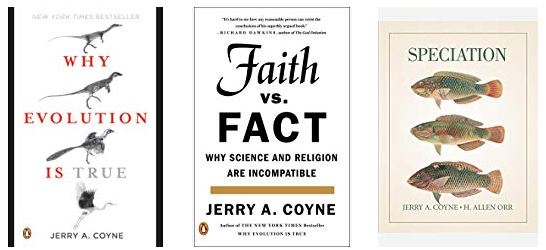|
TRANSLATE THIS ARTICLE
Integral World: Exploring Theories of Everything
An independent forum for a critical discussion of the integral philosophy of Ken Wilber
 David Christopher Lane, Ph.D.
Professor of Philosophy, Mt. San Antonio College Lecturer in Religious Studies, California State University, Long Beach Author of Exposing Cults: When the Skeptical Mind Confronts the Mystical (New York and London: Garland Publishers, 1994) and The Radhasoami Tradition: A Critical History of Guru Succession (New York and London: Garland Publishers, 1992). David Christopher Lane, Ph.D.
Professor of Philosophy, Mt. San Antonio College Lecturer in Religious Studies, California State University, Long Beach Author of Exposing Cults: When the Skeptical Mind Confronts the Mystical (New York and London: Garland Publishers, 1994) and The Radhasoami Tradition: A Critical History of Guru Succession (New York and London: Garland Publishers, 1992).If there's a singular topic Integral students need to be educated on it is evolutionary theory, given their frequent but uninformed use of the term "evolution". These short biographical chapters about evolutionary theorists have been written by different philosophy students of professor David Christopher Lane. (FV)
THE EVOLUTIONARY SCIENTISTS
Glimpses into the Life and Work of Great Thinkers in Evolutionary Biology
Coyne|
Crick|
Darwin|
Dawkins|
Diamond|
Dobzhansky|
Eldridge|
Gould|
Haldane|
Hamilton |
Lamarck|
Lovelock|
Mayr|
Mendel|
Monod|
Spencer|
Trivers |
Wallace |
Weismann |
Williams |
E.O. Wilson
Jerry CoynePaycee MinayaPerhaps one of the most provocative contributors to evolutionary thought in recent times is Chicago-born biologist Jerry Coyne. Born on December 30, 1949, Coyne is known primarily for his work on speciation and for his disapproval of those championing a synthesis between science and religion. Coyne graduated from the College of William and Mary in 1971 with a Bachelor of Science degree in Biology and received a Ph.D. in evolutionary biology from Harvard University in 1978. He then completed a postdoctoral fellowship at the University of California, Davis and became an assistant professor at the University of Maryland in the years following that. In 1996, Coyne became a faculty member at the University of Chicago for the Department of Ecology and Evolution. He has been there ever since and is currently a Professor Emeritus. In his book titled Why Evolution is True, Coyne reiterates the Darwinian theory of evolution and breaks this down into six distinct parts: evolution itself, gradualism, speciation, common ancestry, natural selection, and nonselective mechanisms of everyday change. Coyne explains that each aspect needs to be testable on their own and provides ample evidence doing so. In short, he claims that the evidence for evolution stems from a plethora of resources including the fossil record, vestigial organs, and developmental quirks (which he underscores to refute the creationist's carnard that all species are perfect by design). Though he is well-versed in each aspect of this theory, as a geneticist, Coyne focuses primarily on speciation and appropriately illustrates the origin of species. As a fan of the Darwinian theory of evolution, Coyne's scientific work has been largely concerned with the genetics of species differences and is aimed at understanding the evolutionary processes that produce new species. Coyne's work focuses on the origins of species and detecting these origins through the genetic patterns they produce which, he argues, ultimately justifies the argument that evolution is, indeed, true. Speciation is the process in which new and distinct species are formed throughout evolution. When considering the current evolutions of species, it is necessary to consider the origins of such species to derive a more holistic picture of said organism's lineage because doing so renders a more comprehensive, concrete narrative concerning the life of the past. He used Drosophila melanogaster (fruit fly) in order to figure out whether speciation involves a plethora or smattering of genes, which factors play a significant role in this process, and which factors cause gene sterility and inviability.  Jerry Coyne According to Coyne's 1992 review article titled “Genetics and Speciation”[1] in which he reflects on his Drosophila conclusions and the new generalizations about speciation, there is a vast variation in the number of genes that influence—not cause—the development of different species. In his research, Coyne found that this number had to be at least 2 but could range anywhere from 2 to 900, thus begging the notion that reproductive isolation is often polygenic. Polygenes occur when a gene's individual effect on a phenotype is too minute to be observed but can make a noteworthy impression or change in one's genetics when combined with other genes. Coyne also notes that “when an isolating factor is polygenic, direct genetic analysis is not powerful enough to distinguish between 9 and 900 genes because of the limited number of genetic markers” (“Genetics and Speciation” 512). To counter this, Coyne proposes a more statistical approach—an interdisciplinary method of approaching speciation. He claims that while brute-force genetics is effective, “a statistical approach combining genetic and biogeographic information from hybrid zones can produce much larger estimates” (“Genetics and Speciation” 512). By employing a statistical approach, he believes that evolutionary patterns will become more apparent. He also implies that it is important to know how many loci there are and where these genes lie, and to specifically determine the quantity and location of “speciation genes.” In this regard, Coyne proposes the use of brute-force genetics. Brute-force genetics crosses closely similar pairs of species whose reproductive isolation can be overcome in a laboratory. By observing their association with mapped biochemical or morphological mutations, geneticists are able to discover the number and location of these “speciation genes.” If geneticists can find out roughly how many and where these genes lie, they are more likely to have a better understanding of the origins of speciation. Polygenic influence is significant in the course of evolution because depending on the different combinations of these polygenic traits, different variations throughout species will occur, which is significant for females of species when it comes to choosing mates. To Coyne, one must consider a variety of factors that influence the causes of speciation. Coyne argues that the conglomeration of biology, geography, and passing of time all contribute to the occurrence of different species. He claims that each of these factors—both dependent and independent of one another—can influence a species' likelihood for reproductive isolation; that is, the event that members of different species cannot produce offspring, or if an offspring is produced, then it is sterile. He notes that there is yet no hard evidence proving that these factors directly influence speciation; however, there is a growing consensus that this is the correct pathway for a richer and deeper understanding. First and foremost, one species' biology influences their propensity for speciation. Sexual organs and gametes must be compatible for reproduction in that the female sex cell can be fertilized by the male sex cell (i.e., the human female ovum is fertilized by the human male sperm). So long as this requirement is met and the species are similar, it is possible for different species and variations of species to occur. This is why hybrid species are possible. For instance, a male donkey and a female horse can mate and produce living offspring (a mule) but this offspring will be sterile and unable to reproduce. Moreover, Coyne argues that speciation can be attributed to both allopatric and sympatric means. Allopatry is the condition that occurs when genetically similar species cannot interbreed because of geographical separation. Though two populations could be genetically similar, each population evolves separately and at its own pace. Sympatric speciation is the opposite condition in which several groups of the same species occupy the same geographic location but evolve differently until they can no longer reproduce and are considered different species. In terms of evolution, it is apparent that both types of geographical stratification—sympatry included—can lead to the occurrence of entirely new species. Coyne reiterates this notion in his review article by claiming that though “genetic divergence occurs much more easily when populations are disjunct… some models and experiments show that populations can develop reproductive isolation while remaining in potential contact”. These aspects of evolution would not be possible without considering the passage of time. The longer a species survives, the longer it is exposed to “isolating factors”—that is, mate discrimination, different habitat preferences, pollination by different insects, etc. The longer a species is exposed to these different factors, the more likely it is that different individuals within these populations will adopt different preferences and behaviors, and, eventually, the more intense genetic differentiation will be, as Coyne claims. He writes, “After sufficient time, reproductive isolation evolves as a byproduct of this genetic differentiation”). Moreover, in his Drosophila research (actually, his revisitation of this research), Coyne and his then-graduate student, H. Allen Orr, actually found that the passage of time does have an impact on reproductive isolation. They wrote that “reproductive isolation increase[s] with divergence time between taxa,” meaning that regardless of which type of geographical situation—be it sympatric or allopatric—reproductive isolation is both innate between two populations and will increase given ample time (Coyne and Orr 295). In addition to recognizing the factors that lead to a new species' survival, Coyne had to note the factors that lead to a species' sterility and inviability. When Coyne and Orr embarked on Drosophila research, they expanded the number of species pairs and focused on hybrid compatibility. They found that in hybrid species, it is the males that are able to “quickly succumb to such [recessive traits] because the alleles are fully expressed on the X-chromosome” (Coyne and Orr 301). This means that a hybrid male offspring of any species will likely be inherently sterile and that—though the females will take a longer time to be affected by recessive alleles—they too will eventually be sterile and invisible. In terms of evolution, this hybrid incompatibility holds significance because of its role as a reproductive isolating barrier. Moreover, reinforcement—direct selection for sexual isolation that occurs among sympatric taxa—ensures that reproductive isolation will increase via natural selection. Given Coyne's extensive research and plausible explanations for evolution's occurrence, it seems unlikely that his theories are not on the right track. However, there are indeed nonbelievers in evolution—individuals that Coyne has adamantly attempted to sway. Darwin himself deemed speciation the “mystery of mysteries” because he was unsure (and rightly so) of the cause of new and distinct species in the course of evolution. Coyne provided ample research on this and it is because of his many contributions that he is so widely respected. notes[1] Coyne, J. Genetics and speciation. Nature 355, 511-515 (1992). Further Reading1. Why Evolution is True, Penguin Books; Reprint edition (January 26, 2010). 2. (With H. Allen Orr) Speciation, Sinauer Associates is an imprint of Oxford University Press; 1 edition (May 1, 2004) 3. Faith Versus Fact: Why Science and Religion Are Incompatible, Penguin Books; Reprint edition (May 17, 2016) "Why Evolution is True" - Coyne's blog in which he comments on science, culture and religion.  MSAC Philosophy Group
The theory of evolution has a long history. However, it was not until Charles Darwin and Alfred Russel Wallace discovered that the wide variety of species we presently see were largely the result of natural selection did evolutionary studies have a solid, scientific basis. In the past one hundred and sixty years, a number of eminent biologists have contributed to our understanding of how complex life forms emerged from simpler, more rudimentary ones. Comment Form is loading comments...
|